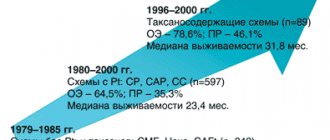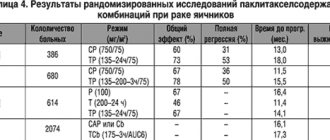Write a review
Reviews: 0
Manufacturers: Moscow Pharmaceutical Factory (Russia)
Active ingredients
- Liquid paraffin
Disease class
- Not indicated. See instructions
Clinical and pharmacological group
- Not indicated. See instructions
Pharmacological action
- Laxative
Pharmacological group
- Laxatives
Baby care
Young mothers are among the first to receive a recommendation from a pediatrician who comes to the house with patronage to use Vaseline oil for baby hygiene. It is usually recommended to collect it on a cotton swab and treat the baby’s nose and ears as a morning procedure. It is believed that this drug helps soften crusts in the nose and moisturizes the sinuses. It is also used to treat the scalp to gently remove seborrheic crusts.
Naturally, it can also be used only on the recommendation of a doctor and in careful doses, without enthusiasm.
Contraindications
Naturally, it is worth considering contraindications to the use of the product. So, among the prohibitions:
- Inflammation in the abdominal cavity, as well as the presence of parasites;
- Prohibition of internal use in the presence of hemorrhoids, ulcers and other problems that may be found in the digestive system;
- Lactation and pregnancy, there is a risk of uterine tone;
- Poisoning;
- Fever, as well as intestinal obstruction and bleeding;
- Hypersensitivity to the drug.
It is also worth understanding that petroleum jelly self-prescribed or taken without control can lead to a decrease in intestinal tone, which will further aggravate the situation with constipation, as well as to hypervitaminosis.
When taking care of yourself and using simple and accessible products in various areas, you should be careful. It is necessary to follow the recommendations given in the instructions and not use the principle “more is better.” In such a situation, you can get the opposite effect.
Similar drugs:
- Duphalac Syrup
- Vaseline oil Substance-liquid
- Senade Tablets
- Magnesium sulfate Powder for oral suspension
- Magnesium sulfate Substance-powder
- Senna Tablets
- Forlax Powder for oral solution
- Enema Rectal solution
- Glycerin Solution for local and external use
- Lactulose Substance-liquid
** The Drug Directory is intended for informational purposes only. For more complete information, please refer to the manufacturer's instructions. Do not self-medicate; Before starting to use the drug Vaseline oil, you should consult a doctor. EUROLAB is not responsible for the consequences caused by the use of information posted on the portal. Any information on the site does not replace medical advice and cannot serve as a guarantee of the positive effect of the drug.
Are you interested in the drug Vaseline oil? Do you want to know more detailed information or do you need a doctor's examination? Or do you need an inspection? You can make an appointment with a doctor - the Euro lab is always at your service! The best doctors will examine you, advise you, provide the necessary assistance and make a diagnosis. You can also call a doctor at home . Euro lab clinic is open for you around the clock.
** Attention! The information presented in this medication guide is intended for medical professionals and should not be used as a basis for self-medication. The description of the drug Vaseline oil is provided for informational purposes and is not intended for prescribing treatment without the participation of a doctor. Patients need to consult a specialist!
If you are interested in any other drugs and medications, their descriptions and instructions for use, information about the composition and form of release, indications for use and side effects, methods of use, prices and reviews of drugs, or you have any other questions and suggestions - write to us, we will definitely try to help you.
Main purpose
The main purpose of petroleum jelly is to use it for problems with stool. The drug, as experts note, has a softening effect and relieves pain. The use of oil for constipation should only be prescribed by a specialist, because it must be taken orally and there may be contraindications. As a result, self-medication may cause more harm.
Vaseline instead of cosmetics and medications: 9 useful ways to use Read more
Practical recommendations for the treatment of constipation
Constipation is the third most common symptom in palliative care after pain and anorexia. We invite specialists to familiarize themselves with the leaflet on the treatment of constipation in palliative patients, prepared by the Vera Foundation. You can download the memo in pdf format at the end of the article.
Definition
Constipation is an irregular and difficult passage of solid stool through the intestines or a rare passage of small amounts of hard stool (less than 3 times a week), a feeling of incomplete bowel movements or passage of stool less frequently than was normal for the patient before the illness.
The presence of constipation is determined by the patient himself. Passing stool does not have to be daily. If the stool is soft and passes without difficulty once every 2-3 days, this can be considered normal. Constipation is the third most common symptom in palliative care after pain and anorexia. The incidence of constipation in cancer patients ranges from 32% to 87%, in the case of taking opioids - 90%.
The goal of all measures is to prevent constipation, and if it occurs, proper treatment.
Causes of constipation
Organic factors
● Opioids:
- increase the tone of the sphincters (ileocecal valve, anal sphincter);
- enhance segmentation (pyloric, small and large intestines);
- increase the absorption of water and electrolytes in the small and large intestines, which leads to drying and hardening of the stool;
- weaken the defecation reflex (the rectum becomes less sensitive to stretching).
In the case of a high likelihood of severe constipation (relevant medical history), it is preferable to choose opioids with less effect on the intestines (for example, Targin).
● Other medications : antacids, antiemetics (5-HT3 antagonists), diuretics, iron and calcium supplements.
● Metabolic disorders : dehydration (fever, vomiting, polyuria, insufficient drinking), hypercalcemia, hypokalemia, uremia, hypothyroidism, diabetes.
● Neurological disorders : brain tumors, lesions at the level of the spinal tract, infiltration of the sacral nerves, autonomic disorders (primary, such as Parkinson's disease, multiple sclerosis, motor neuron disease, or secondary, associated with cancer).
● Structural disorders : tumor masses in the pelvis, post-radiation fibrosis, hemorrhoids, anal fissures, perianal abscess.
Functional factors
- Diet : poor appetite and small amount of food taken, insufficient amount of fluid taken, low amount of fiber in food.
- Environmental conditions : lack of personal space, uncomfortable conditions for passing stool.
- Other factors : advanced age, low activity, weakness, limited mobility, bed rest, depression.
Consequences of constipation
- Anorexia, nausea, vomiting, obstruction of the large intestine.
- Bloating, discomfort, pain.
- Pain in the rectum (constant or spastic).
- Dysfunction of the urinary system (difficulty urinating, urinary retention, urinary incontinence due to bladder overflow).
- Discharge from the rectum, stool leakage, overflow diarrhea.
- Delirium.
Assessment/History
When collecting an anamnesis, since the conversation touches on a very intimate area, it is necessary to first predispose the patient to the conversation. You should pay attention to the factors presented in Table 1.
Clinical examination
Abdominal examination:
- increase;
- tension in the abdominal wall, especially in the area of the cecum (right lower quadrant);
- palpable fecal masses, which must be distinguished from a tumor: fecal masses most often accumulate in the descending colon (left lower quadrant), are usually mobile and displaceable when pressed, disappear after constipation is eliminated.
Digital examination of the rectum:
- stool hardness and consistency;
- empty, dilated rectum (may be a sign of more proximal hard stool);
- hemorrhoids, painful fissures, fistulas in the anal sphincter area;
- intracavitary tumor or external compression of the rectum by a mass in the abdominal cavity;
- scars or stenosis in the anal area.
Additional examination methods (in case of fairly stable condition and long-term prognosis) :
- in acute conditions: a simple x-ray of the abdomen (if there are signs of intestinal obstruction or accumulation of a large amount of feces in the large intestine).
Prevention
- Fluid intake: 1500–2000 ml per day, in small portions throughout the day.
- Intake of dietary fiber (bran 20–25 g per day), if the patient drinks at least 1500 ml of liquid per day. Whole fruits and vegetables are better than juices; cereal porridge, whole grain bread.
- Physical exercises for the patient in accordance with his abilities, condition, preferences (frequency, intensity and duration), so that they are feasible and carried out.
- If physical capabilities are reduced: twist the body, raise bent legs alternately for 15–20 minutes a day.
Personal space
- It is advisable to defecate in the toilet room or use a bedside toilet (instead of a bedpan).
- Try to have a bowel movement within 30–60 minutes of eating to take advantage of the gastrocolitic reflex.
- Take the correct position during defecation, which increases pressure in the abdominal cavity: place your feet on a stool so that your knees are higher than your hips, and lean forward, keeping your back straight, with your elbows resting on your knees.
- Raise the height of the toilet seat or install grab bars to help the patient be more independent.
For bedridden patients, raising the head of the bed, lying on the left side with your knees pressed to your stomach can make it easier to pass stool.
In the last days of life, one must weigh the need and the burden on the patient when trying to obtain regular bowel movements. The decision is made individually; bowel emptying may lose priority compared to relieving other symptoms.
Drug treatment of constipation
Recommended measures for the treatment of constipation for various clinical manifestations of this condition are presented in Table 2, characteristics and features of the use of drugs for the treatment of constipation - in Table 3.
Many oral laxatives, rectal suppositories and enemas have the same side effects - cramping, colic, flatulence, nausea and diarrhea - which can be reduced by titrating the dose.
Treatment tactics for constipation (see Appendix 1)
While taking opioids:
- Begin laxative therapy at the start of opioid treatment (in the absence of diarrhea). Laxatives with osmotic action that increase the adsorption of water in the intestine (lactulose, macrogol, etc.), as well as agents that stimulate the function of the colon (senna, bisacodyl, sodium picosulfate) or small intestine (castor oil, vaseline oil) will help to facilitate bowel movements.
For constipation without opioid use:
- Start with a gut stimulant (eg, senna) and an osmotic laxative (eg, lactulose). Remember that when taking laxatives, stool may only appear on the third day.
- If the stool is soft but not frequent enough, increase the dose of the stimulant (senna, bisacodyl).
- If the stool is hard, increase the dose of an osmotic laxative (lactulose for a mild effect, magnesium sulfate for a stronger effect).
- If there is no bowel movement for three days, perform a digital examination of the rectum and, if there are no contraindications, prescribe a rectal suppository or microenema.
For constipation accompanied by signs of intestinal obstruction:
- If stool is in the rectum, use a glycerin suppository to soften the stool; after an hour, try digital removal of feces (after prescribing an analgesic and a sedative).
- If the fecal impaction is higher, in the descending colon, use an oil microenema.
For colostomy:
- If the colostomy is proximal, then the effect of laxatives may not be effective, and suppositories are not effective, since they cannot stay inside the colostomy.
- If the stoma is in the descending or sigmoid bowel, an enema may be effective.
For paraplegia:
- Oral laxatives may be effective in moving stool toward the rectum.
- Empty your rectum using one of the following methods: suppositories, enema, or digital stool removal.
O.V. Artykova for her assistance in preparing the materials. (Head of the Hospice “Zelenograd” branch of the State Budgetary Healthcare Institution of the Central Clinical Hospital of the Doctor of Health), A. V. Kryukov (clinical pharmacologist of the State Budgetary Healthcare Institution of the Central Clinical Hospital of the Doctor of Health).
List of sources
1. Chronic pain syndrome (CPS) in adult patients in need of palliative care, 2016, ICD 10: R52.1/ R52.2.
2. Introducing Palliative Care Fifth Edition. Editors Twycross R., Wilcock A., 2016.
3. Hospice and Palliative Care Training for Physicians. Unipac Self-Study Program, 2008.
4. Lanarkshire Palliative Care Guidelines, 2012.
5. ProCare HospiceCare. Hospice Medication Utilization Guidelines. Eds. S. Shah, M. Madison. www.ProCareHospiceCare.com.
6. Larkin PJ The management of constipation in palliative care: clinical practice recommendations. Palliative Medicine, 2008; 22: 796–807.
7. Constipation Symptoms in Adults with Cancer. Cancer Care. Ontario, 2012.
You can download the “Constipation in Palliative Care” leaflet in pdf format here:
Cosmetology
In cosmetology, petroleum jelly and petroleum jelly in solid form are used extremely actively. Paraffin is used to make various lotions and compresses, for example, to prevent frostbite, to relieve dry lips, etc. It is included in various lip glosses, hygienic lipsticks and other products that are aimed at moisturizing. For example, you can simply take some oil and spread it on your lips.
Question answer
Is it harmful to use Vaseline in winter? Cosmetologists value Vaseline oil for its hypoallergenicity. At the same time, it can be used both as an independent drug and as an additional substance included in certain skin care products.
For example, Vaseline oil is quite widely used for hair care. It is believed that it creates a protective film on the curls that reliably resists UV rays and adverse weather conditions. Oil masks are made on its basis. You just have to take into account that it is quite difficult to wash off such a drug from your hair. You should tune in to this right away and not worry that it doesn’t wash out well.
In its pure form, the product is often used to stimulate eyelash growth. The oil helps restore and strengthen hair by nourishing it and accelerating growth. It is enough to apply it on them with a cotton swab and carefully distribute it over the hairs with a special eyelash comb. It is best to perform this manipulation at night so that the oil does not get into your eyes and interfere with it. In the morning, just wash it off with water.
Use a product to strengthen the nail plates. For example, it can be used to more gently remove the cuticle during a manicure. It is usually recommended to use it once a week. But you can use the product as needed, for example, for dry skin on your fingers.





